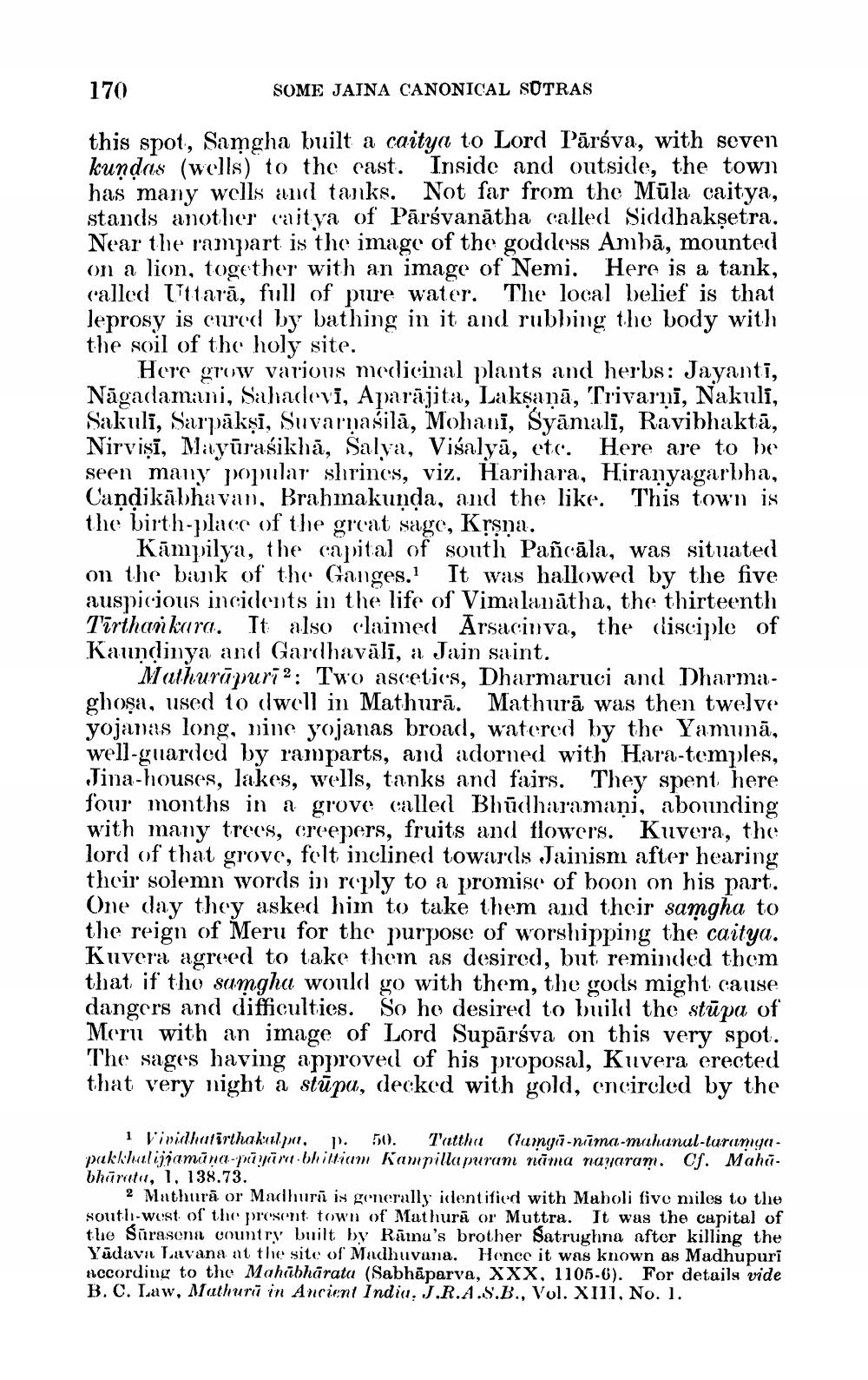________________
170
SOME JAINA CANONICAL SOTRAS
this spot, Samgha built a caitya to Lord Pārsva, with seven kundas (wells) to the cast. Inside and outside, the town has many wells and tanks. Not far from the Mūla caitya, stands another waitya of Pārsvanātha called Siddhakşetra. Near the rampart is the image of the goddess Ambā, mounted on a lion, together with an image of Nemi. Here is a tank, (alled Uttarā, full of pure water. The local belief is that leprosy is cured by bathing in it and rubbing the body with the soil of the holy site.
Here grow various medicinal plants and herbs: Jayanti, Nāgadamani, Sahadevī, Aparajita, Laksanā, Trivarni, Nakuli, Sakuli, Sarpākṣī, Suvarnašilā, Mohani, Syāmali, Ravibhaktā, Nirvişi, Mayūraśikhā, Salya, Višalyā, etc. Here are to be seen many popular shrines, viz. Harihara, Hiranyagarbha, Candikābhavan, Brahmakunda, and the like. This town is the birth-place of the great sage, Krsna.
Kāmpilya, the capital of south Pañcāla, was situated on the bank of the Ganges. It was hallowed by the five auspicious incidents in the life of Vimalanātha, the thirteenth Tirtharkura. It also claimed Arsaciuva, the disciple of Kaundinya and Gardhavāli, a Jain saint.
Mathurāpuri2: Two ascetics, Dharmaruci and Dharmaghoşa, used to dwell in Mathurā. Mathurā was then twelve yojanas long, nine yojanas broad, watered by the Yamunā, well-guarded by ramparts, and adorned with Hara-temples, Jina-houses, lakes, wells, tanks and fairs. They spent here four months in a grove called Bhūdharamani, abounding with many trees, creepers, fruits and flowers. Kuvera, the lord of that grove, felt inclined towards Jainism after hearing their solemn words in reply to a promise of boon on his part. One day they asked him to take them and their samgha to the reign of Meru for the purpose of worshipping the caitya. Kuvera agreed to take them as desired, but reminded them that if tho samgha would go with them, the gods might cause dangers and difficulties. So he desired to build the stūpa of Meru with an image of Lord Supārsva on this very spot. The sages having approved of his proposal, Kuvera erected that very night a stūpu, decked with gold, encircled by the
1 Vividhatirthakupal, 1. 50. Tattha (lamgii-niima-mahanul-larangapakknulijamūna-püyür bhilliam Kampilla puran nama nayaram. Cf. Mahu. bhārat, 1, 138.73.
2 Mathurā or Madhurā is generally identified with Maboli five miles to the south-west of the present town of Mathurā or Muttra. It was the capital of the Sūrasena country built by Rāmu's brother Satrughna after killing the Yūdava Lavana at the site of Madhuvuna. Hence it was known as Madhupuri according to the Mahabharata (Sabhāparva, XXX, 1105-6). For details vide B. C. Law, Mathurü in Ancient Indiu. J.R.A.S.B., Vol. XIII, No. 1.




